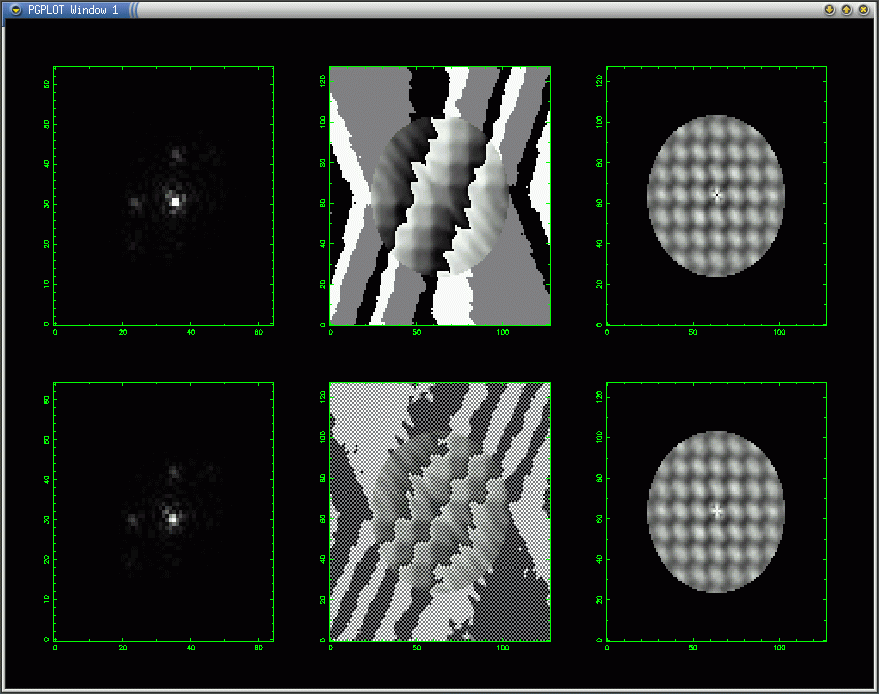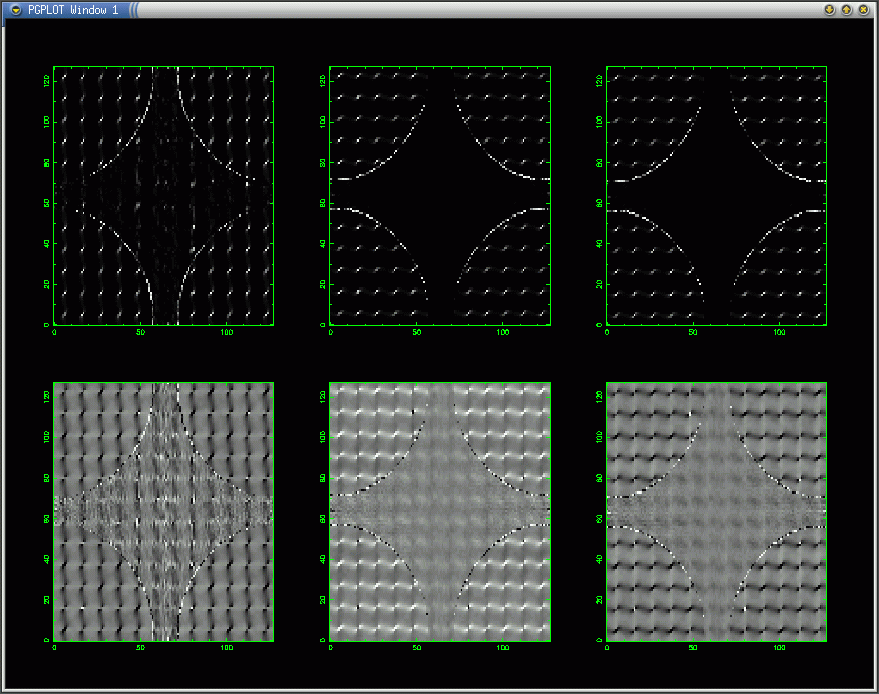
# image support (in pixels) $supp = 128; # image scale (pixels per meter) $scale = 32; # telescope diameter $diam = 1.8; # otturation diameter $ott = 0.0; # simulation duration (limited by layer dimensions) $simt = 2.0; # timestep $dt = 0.01; # runs in ensamble mean $ens = 1; # layer structure $str = $Seeing::test_layers; # magnitude of object $mag = 12; # magnitude of reference $mag1 = 6; # additive gaussian noise: SIGMA PER PIXEL $add = 0.1; # wavelength $lambda = 555e-9; # describe image $im = zeroes float,$supp,$supp; $im->set($supp/2,$supp/2,1.0); $im->set($supp/5*3,$supp/2,2.0); $im->set($supp/5*3,$supp/5*3,1.0);
Real (upper) and immaginary cross-spectrum in a infinite magnitude simulation:

Recovered image (zoom), phase, log of recovered spectrum, corrected modulus using reference, log of SNR ration and original image of a infinite magnitude, cross-spectrum simulation.
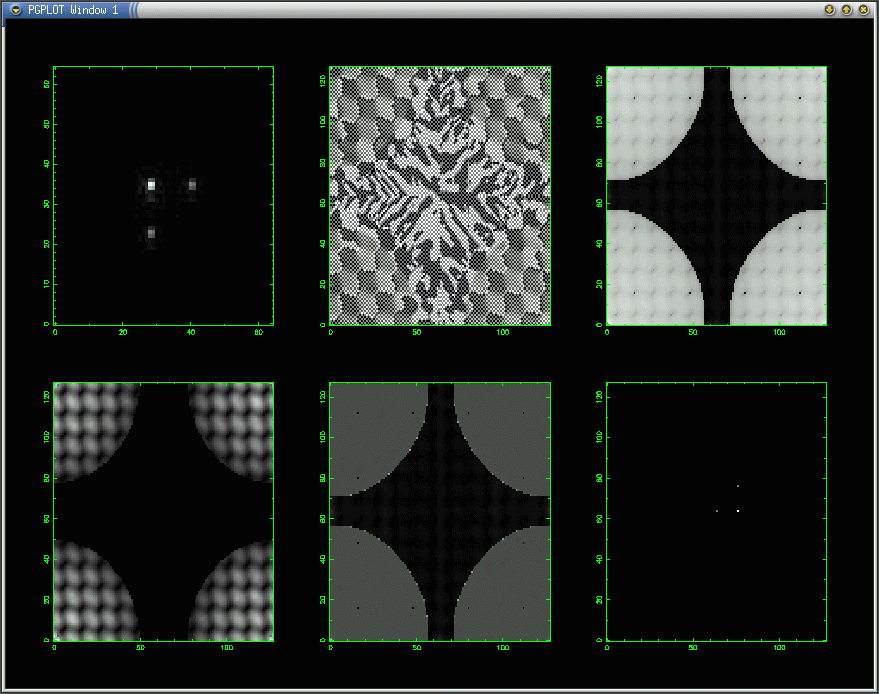
Real (upper) and immaginary bi-spectrum in a infinite magnitude simulation:
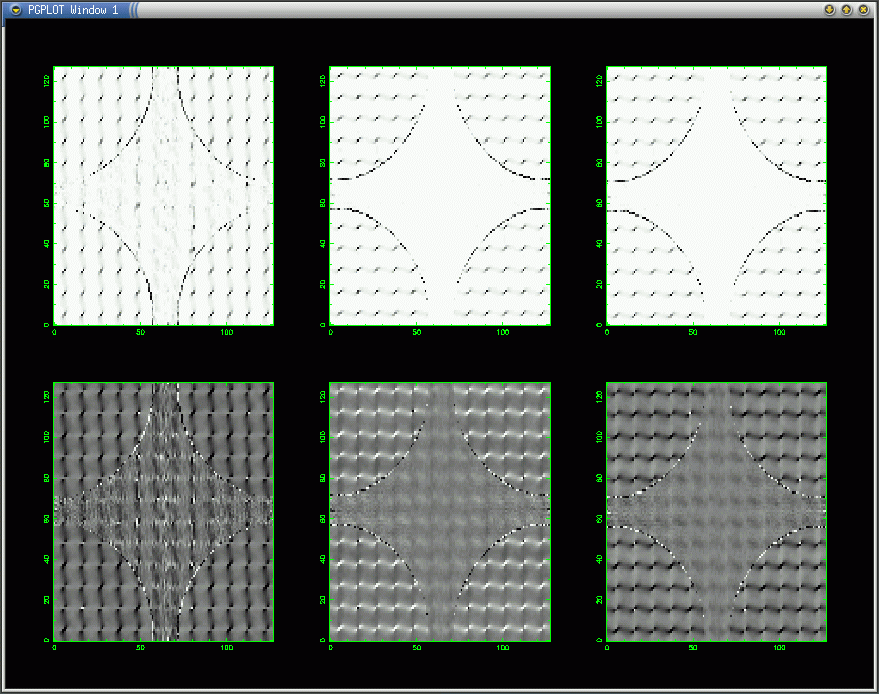
Recovered image (zoom), phase, log of recovered spectrum, corrected modulus using reference, log of SNR ration and original image of a infinite magnitude, bi-spectrum simulation.
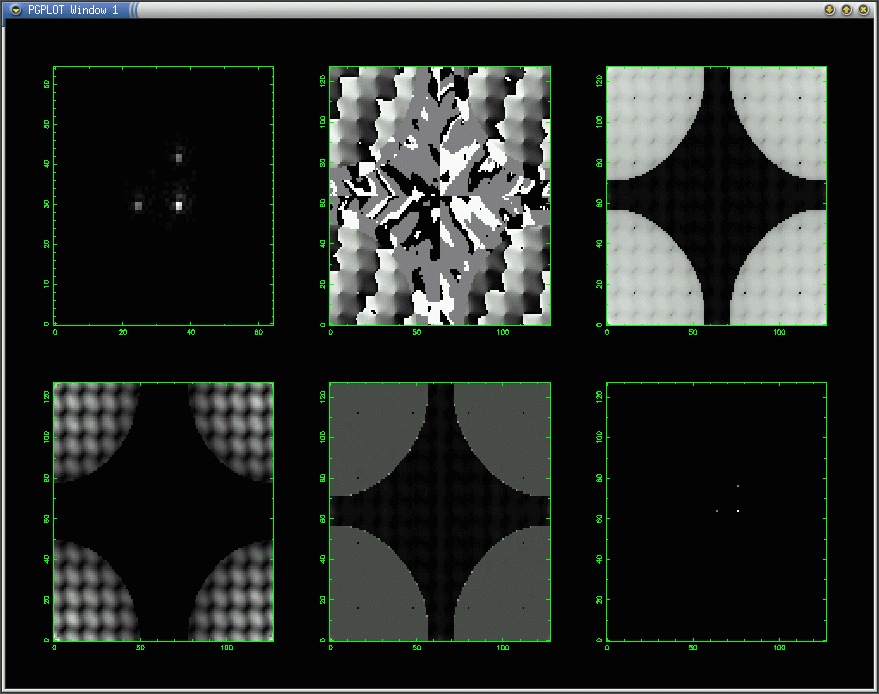
Comparative recover for a triple start of magnitude 9. Bi-spectrum (upper line) and Cross-spectrum.
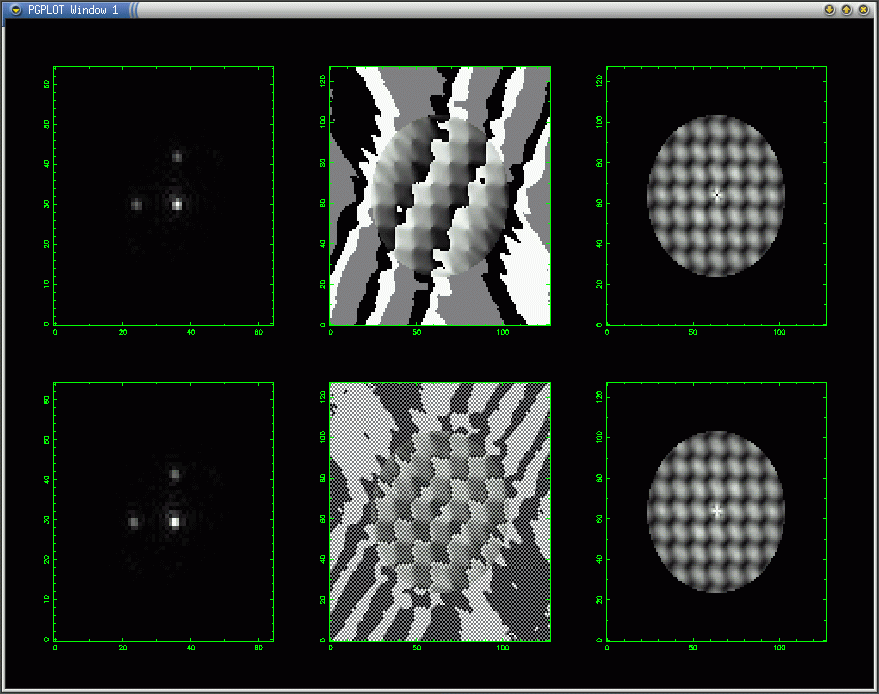
Comparative recover for a triple star of magnitude 12. Bi-spectrum (upper line) and Cross-spectrum.
